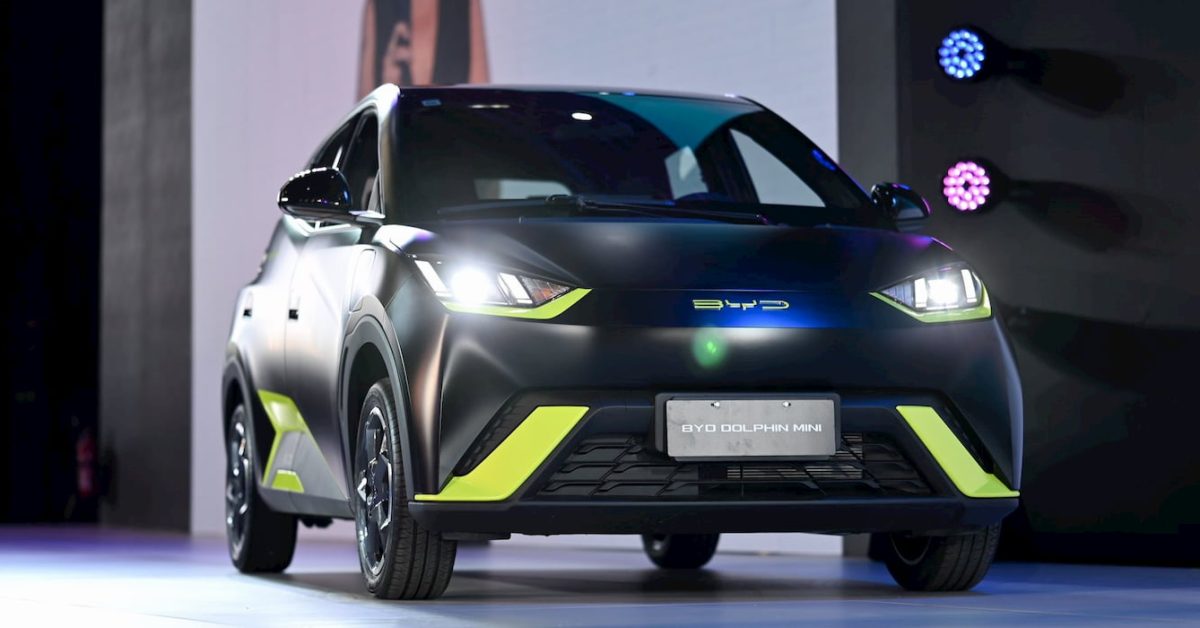Even with the new 100% tariff on electric vehicles imported from China, BYD would still have the cheapest EV in the US. According to a new report, BYD’s lowest-priced EV would still undercut all US automakers at under $25,000.
After discontinuing the production of vehicles powered entirely by internal combustion engines in March 2022, BYD has been at the forefront of the industry’s shift to EVs.
Honestly in my opinion it is time to remove all tariffs on EVs under 25k and let anyone who wants to fill that slot in. American car manufacturers refuse to fill the market need.



Little back of the envelope math based on some quick google numbers that I didn’t fact check, and making some assumptions that I probably shouldn’t make.
Cargo ships emit around 10-40 grams of co2 per kilometer
It’s something like 11000km from the port of Shanghai to the port of Los Angeles (I don’t know the exact shipping routes, or which ports they’d actually be using, but those are the largest ports in China and the US west coast.
It takes about 14-40 days to sail, and another 1-3 days to load/unload the ship. So let’s call that around a month round trip and 22000km, so up to about 12 trips a year max.
The biggest car carrier ships can carry up to about 8500 cars, I’m having a harder time finding what a more average load of cars is, but I saw an article about a Canadian record in 2005 being 5214 cars in a single shipment so let’s say 5000 to keep the math easy
Typical passenger cars emit around 4.6 metric tons of CO2 per year
Gonna round some of the numbers up to be pessimistic, make the math easy, and account for some of the other emissions besides CO2, emissions from manufacturing, etc. so let’s say 50g/km for ships, 25000km round trip, and that cars emit 5 metric tons/year
So at 12 trips a year, 25000km round trip, emitting 50g of co2 per km, a ship emits 15,000,000g or 15 metric tons of CO2, as much as 3 passenger cars do a year.
Assuming that all of those cars are EVs and sold to replace ICE cars, that those old cars are then taken off the road and not resold, and that the new cars are being charged with green energy from renewable sources or nuclear that aren’t emitting carbon
5000 new cars per shipment × 12 shipments per year × 5 tons of CO2 per old car - 15 tons of co2 emitted by the ships = potentially 299,985 metric tons less emissions per year
Now that’s probably an insanely high estimate, I’m sure there are about 2000 other things I didn’t even try to account for on top of what I mentioned, and some of my rounding probably wasn’t entirely appropriate.
But even if all of my assumptions are way off and the actual emissions savings are only 1% of that, that’s still almost 3000 metric tons of CO2 saved per year. I think it’s definitely within the realm of possibility that shipping EVs from China could reduce carbon emissions.
Shipping is more like 15g CO2/km/metric ton of cargo. No way the whole giant boat emits 10g per km lol, that would be like an order of magnitude less than a Prius per km. But yes, even with shipping, over the lifetime of a car an imported BEV beats a domestic ICE because that initial carbon penalty is like driving let’s say quarter of the way to China once in an ICE.
That does absolutely sound more realistic to me, I was a bit skeptical of the numbers I quoted, but I saw them come up in a few places after a quick google search and I was open that I didn’t fact-check those numbers.